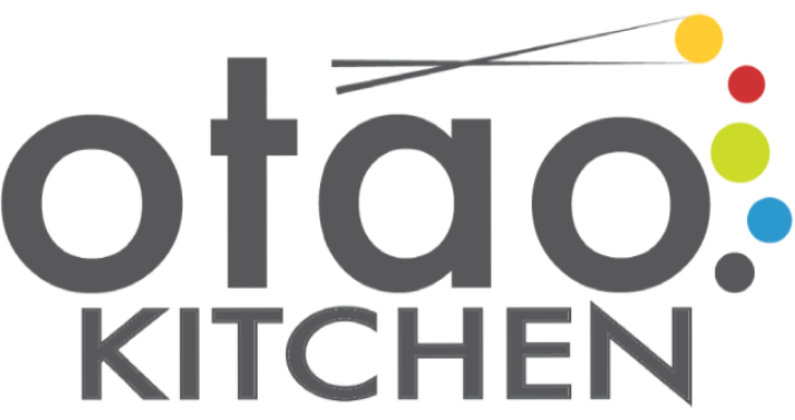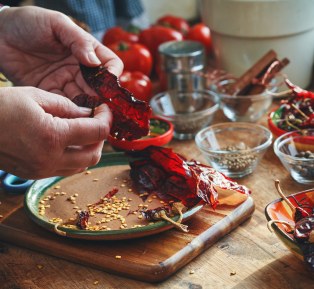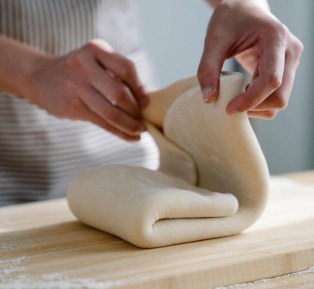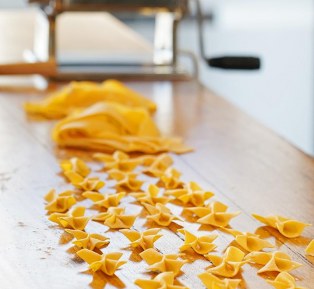
Culinary Inspiration by Otao Kitchen
Cook . Connect. Celebrate
At Otao Kitchen, we believe cooking is one of the most powerful ways to connect—with yourself, your loved ones, and the world around you. It can put a smile on your face, bring family and friends together, and create memories that last a lifetime.
But cooking is more than just connection—what you choose to cook and eat impacts your health and the health of the planet. That’s why we’re passionate about making it as easy and enjoyable as possible for everyone to experience the joy of good, home-cooked food.
“Cook to Connect” is at the core of everything we do. Through our blog, food experiences, and global travel inspiration, we explore the deep relationships between cuisine, culture, and community. From vibrant street food across the globe to time-honoured family recipes passed through generations, we share with you the stories, flavours, and traditions that shape the way the world eats.
Here, you’ll find:
Practical cooking tips and techniques
Authentic global recipes
Cultural and culinary insights
Event planning advice
Kid-friendly cooking inspiration
Travel stories and destination food guides
Seasonal celebrations and global food festivals
Whether you're in your home kitchen or exploring a faraway land, we’re here to help you cook with purpose—and connect with the world through food.
Japanese Pantry
Here, the ultimate guide that is essential for Japanese recipes, from staples to intensely flavourful condiments and hot chillies.
The food of Japan
All around the world, Japanese cuisine is appreciated, respected and most of all enjoyed.
When it comes to food, the Japanese are among the most passionate of any race. For many Japanese travelling to any region in Japan, food is often one of the main reasons for them to go. Many towns and cities in Japan are known for their local speciality, whether a type of sweet, noodle, seaweed or even tofu.
Japanese foods are well known for their excellence in preparation and presentation. Food is an art form and even the simplest dishes are often prepared by chefs who have trained and worked in the field for many years.
Stir-Frying At Home
Stir-frying is a method of cooking where ingredients are fried in a small amount of very hot oil while being stirred. This technique originated in China but has spread into other parts of Asia and the West. To traditionally stir-fry, the most obvious tool you need is a good wok and spatula. However, if you don’t have a wok, that shouldn’t stop you! Simply use a large, wide frying pan with some other basic pantry ingredients. You’ll soon be able to whip up the most delicious stir-fry recipes.
5 Methods Of Steaming
Many vegetables are ideal for steaming, as is fish, duck, chicken and many types of shellfish. The steaming process locks in and enhances the vibrant colours of vegetables.
Nutritional Benefits Of Fermented Foods
Fermented foods are rich in probiotic bacteria. Consuming fermented foods adds beneficial bacteria and enzymes to your overall intestinal flora, improving the health of your gut microbiome and digestive system and boosting the immune system. Some experts say that every small 1/2 cup serving of fermented food can contain up to 10 trillion probiotic organisms. Not only are fermented foods good for you, but they also add a new depth of flavour and umami to (often bland) vegetables. They can be tangy, savoury, salty and delicious! Sauerkraut, kimchi, yoghurt, wine, chocolate and cheese are all classic examples of fermented ingredients that pack a punch.
The Fermentation Phenomenon
Fermenting is a simple, tasty way to preserve food with added health benefits. Chances are you’ve been eating fermented foods your whole life, maybe without even realising it! So many of the everyday staples we take for granted (like wine, tea, bread and chocolate) are made using different fermentation processes.
Essential Korean Pastes & Other Dry Goods
Korean Chilli Paste (Gochujang)
Gochujang is probably one of the most famous Korean condiments. This fermented red pepper paste is used in an array of dishes and adds colour and a huge flavour kick! It’s made from fine Korean chilli powder, glutinous rice, fermented soybeans and salt. While it’s known for being spicy, it also has subtle sweet notes. Keep in the fridge after opening and use within 3 months. The top of the paste may become darker or dry out, but it’s still edible.
Korean Temple Food
Seasonal and slow cooked. There’s no denying the magic that South Korean monks bring to their food. A cuisine made from more than just culinary skills, but from the heart and soul. Traditionally, food offered to religious entities before being offered to humans was considered ‘temple food’. In the Western world it is typically associated with the food of Buddhist monks. As Buddhism spread, the monks gradually made the switch from begging for alms to preparing their own meals, and thus was born the temple cuisine, ‘sachal eumsik’.
The Food Of India
The Food Of India
Eating
In India, meals are traditionally brought to the table on a large serving platter called a thali. Thali is a Hindi word meaning "a large plate." However, in recent years the meaning of the term has expanded. Now, it's a commonly used expression for a style of eating. Thali the meal refers to many different dishes served in small bowls (called katori), arranged on a platter. Platters can also have small, divided sections built into the stainless-steel serving ware. Dhal, vegetables, flatbreads, rice, pickle, salad, and dessert are often included. Thali at restaurants, festivals and weddings are generally a set meal with an "all you can eat" philosophy. Waiters will continuously serve you until you are full!
Customarily, meals in India were either eaten seated on the floor, or on very low stools or cushions. Food is most often eaten with the right hand rather than using cutlery. Some Indians today adopt a spoon and fork, but when it comes to flatbreads- naan, chapati, paratha or roti is used to scoop up a meal.
In South India, cleaned banana leaves are used as a plate, which can be disposed of or fed to cattle after the meal. When hot food is served on banana leaves, they add distinctive aroma and taste to the food. Leaf plates are especially common at celebratory occasions.
Drinks
Drinks are particularly important in India, where temperatures regularly top 40 degrees Celsius in the spring and summer months. Many Indians start their day with a cup of chai, a tea flavoured milk with spices and sugar. Cooler drinks include fresh lemonades, coconut water and lassi, a yogurt (and sometimes fruit) based beverage blended with spices. India's own selection of alcoholic drinks include palm wine, whiskey and beer, the most iconic brand being Kingfisher.
Cooking Equipment
Gas or electric stoves
Spice grinder or mortar and pestle
Heavy frying pan
Saucepan
Pressure cooker
Tandoor oven
Karahi/Kadai
Ingredients
Staple foods of Indian cuisine include rice, wholemeal flour, lentils, peas and mung beans. Lentils may be consumed whole, husked or even split and are used daily in a variety of ways. Some pulses such as chickpeas, kidney beans and black-eyed peas are very common in the north. Besan, a type of flour made from chickpeas is widely used throughout India.
Many Indian dishes are cooked in vegetable oil, but ghee (clarified butter) is popular in northern India, mustard oil in the east, and coconut oil along the south west coast, especially in Kerala. Many types of meat are used for Indian cooking, but chicken, goat and lamb tend to be the most common. Fish and seafood consumption is prevalent in some parts of India, but aren't widely consumed except for coastal areas.
The most important and frequently used spices in Indian cuisine are chilli, black mustard seed, cardamom, cumin, turmeric, asafoetida, ginger, coriander, and garlic. Some leaves commonly used for flavouring include bay, coriander, fenugreek, and mint. The use of curry leaves for flavouring is typical of Gujarati and South Indian cuisine. The sweet dishes are often seasoned with cardamom, saffron, nutmeg, and rose water.
Indian meals also feature a range of accompaniments to add textures such as nuts or dry fish. Chutney, fruits and pickles enhance flavour with tang and salt. Raitas and yoghurt (fresh curd) have a cooling effect on spicy dishes.
Regional Food
In a country with 28 states and hundreds of languages, cuisine differs across India's diverse regions. Variations in local culture, geographic location and economics all have an impact. Food also changes seasonally, depending on which fruits or vegetables are ripe and what proteins and herbs are available. The main features and differences between North and South Indian Cuisine are:
North
Rich meat dishes accompanied by breads such as naan, roti, chapati, parathas
Fried street foods like samosas, pakoras or kebabs
Spices including garam masala and amchur (dried mango powder)
Use of yoghurt and other dairy products
Fenugreek, bay and coriander leaves
The use of a tandoor oven
Middle eastern influences
South
Rice, lentils and stews
Rice or lentil-based breads/pancakes such as dosa, idlis and vada
Tamarind and sambar powder
Fresh or dried curry leaves
Seafood and fish
Coconut and coconut milk
Sometimes the use of beef or pork in Christian communities
Whole mustard seeds are common
Looking for an authentic South Indian restaurant in Melbourne? Seek out the flavors of dosas (thin, crispy pancakes), idlis (steamed rice cake), and flavorful sambar (stew)., all made with traditional spices and techniques.
Religious Diets
In India people often follow dietary restrictions based on their religion or faith. Here are a few examples.
Beef is taboo in Hindu communities. Cows are believed to be ‘holy', providing various items including dairy (milk, yoghurt, butter, ghee, cream and cheese), transport/labour and dung for fuelling fires, fertiliser and building materials.
Islam faith does not allow the consumption of pork or alcohol. Halal products must be derived from animals and/or poultry that have been prepared according to Islamic law.
Buddhist's aim to avoid harming any living thing, which leads to a mostly vegetarian diet.
Sikhs will exclude from their diet: eggs, fish and any ingredients with animal derivatives or cooked in animal fat. Dairy produce is acceptable providing it is free from animal fat.
Some temple diets are free from garlic, onion or any other stimulants like caffeine in attempt to calm the body, encouraging a meditative state.
Food Outside Of India
Indian migration has spread culinary traditions of the subcontinent throughout the world. Indian cuisine has been adapted to local tastes, sometimes sparking creations of entirely new dishes. Chicken tikka masala, kedgeree and butter chicken from Australia or the UK are great examples.
You may also want to try
Indonesian Feast with Tasia & Gracia Seger New
3 hours
$225
Fold & Flow - MFWF
2 Hours
$157
Sauces, Fermentation & Pickling Specialties
4 hours
$317
Bakery Specialties
4 hours
$317
Pastry and Dessert Specialties
4 hours
$317
Vegetable & Plant-Based Mastery
4 hours
$317
Seafood Mastery
4 hours
$317
Poultry Essentials
4 hours
$317
Pork and Game Essentials
4 hours
$317
















